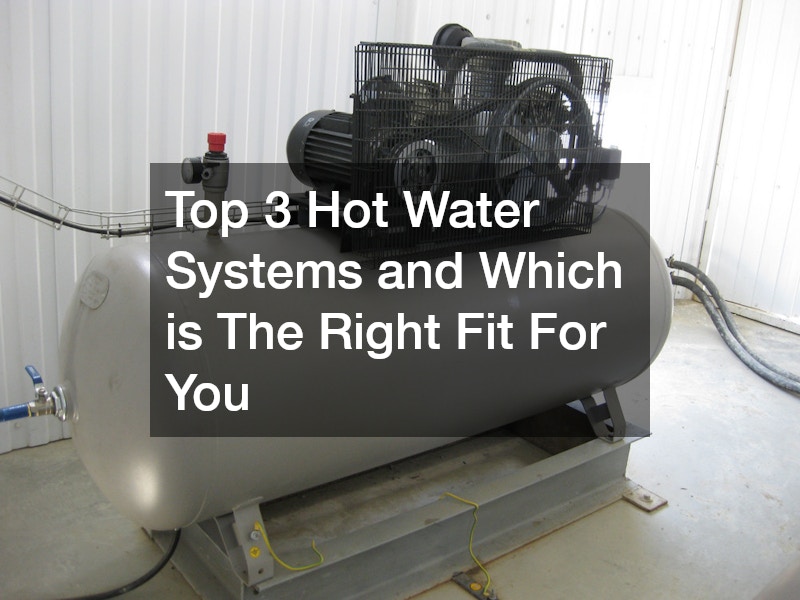When it comes to everyday comfort, few things matter more than reliable hot water. Whether you’re upgrading your current setup or building a new home, choosing the right system can save you money and improve energy efficiency in the long run. With several options available, it’s essential to weigh up what works best for your household’s size, lifestyle and location.
Below, we break down the top three hot water systems used in Australian homes and help you decide which one’s the right fit for you.
1. Electric Hot Water Systems: Affordable and Easy to Install
Electric systems are among the most common water systems found in Australia. They’re simple to install, relatively inexpensive upfront and available in a range of sizes to suit different household needs.
An electric hot water system uses a heating element inside a tank to warm up the water. Once heated, the water stays stored until it’s used, providing a consistent supply for general household use.
Electric systems work well for small households or apartments with low to moderate water usage, especially in homes where gas isn’t available. They’re also ideal for renovations or short-term installations where fast setup is needed. Because they’re widely available across both urban and rural areas, they’re often the most accessible solution for many Australians.
To reduce running costs, electric units can be installed on off-peak electricity tariffs. This allows the system to heat water during cheaper electricity periods, which is especially helpful in keeping energy bills manageable. For even greater efficiency, pairing your electric system with rooftop solar panels can further offset energy usage.
2. Gas Hot Water Systems: Reliable and Cost-Effective Long Term
Gas water systems are a popular alternative for households looking to reduce electricity reliance. These systems heat water quickly and are generally more cost-effective to operate over time, particularly in homes that already use gas for cooking or space heating. They work by using either natural gas or LPG to heat the water, and come in storage or continuous flow (instantaneous) models.
This type of system is well suited to medium to large households with high water demands. If your home is connected to mains gas, installation is straightforward and the system can supply a steady stream of hot water throughout the day. Even without natural gas, LPG models still offer flexibility and reliable performance.
One of the key advantages of a gas system is that it recovers faster than electric models, meaning you can use more hot water without running out. Continuous flow versions are especially efficient, heating water only when you need it—so there’s no risk of running out, even with multiple users. Their compact size makes them a great fit for homes with limited storage space, and they’re well known for their durability and consistent performance.
3. Solar Hot Water Systems: Eco-Friendly and Energy Efficient
Australia’s sunny climate makes solar water systems an excellent choice for homeowners seeking energy efficiency and sustainability. These systems use rooftop collectors to harness solar energy and heat your water. Most units come with a gas or electric booster to ensure you still have hot water during cloudy periods or times of high demand.
Solar hot water systems are best suited to homes with access to ample sunlight, particularly in regions like Queensland, Western Australia or Northern New South Wales. They’re ideal for environmentally conscious households that want to reduce energy bills and their carbon footprint over time. Homes with available roof space will benefit most, as the performance of the system depends heavily on the number and placement of the solar collectors.
Although solar systems require a higher upfront investment, they deliver the lowest long-term running costs of all water systems. With current government rebates and incentives still available in many states, the initial outlay is more manageable than many expect. Over time, the energy savings often outweigh the initial expense, especially when paired with solar electricity systems.
To maximise performance, it’s recommended to choose a model with high-efficiency collectors and a smart controller that automatically switches to boosting only when needed. This ensures you get the most out of solar energy while maintaining a consistent hot water supply for your household.
Which System Should You Choose?
The right hot water system depends on several important factors. Your household size plays a major role—larger families will benefit from systems with faster recovery rates or continuous flow capabilities. Your home’s access to energy sources matters as well; homes with natural gas supply may find gas systems more economical, while sun-rich locations will gain long-term value from solar options. Budget is another consideration. While electric systems are the most affordable upfront, solar systems offer better value over time through lower operating costs. Finally, environmental impact is increasingly relevant for many Australian homeowners. If reducing your carbon footprint is a priority, solar systems are the most sustainable option available today.
Before making a final decision, it’s worth consulting with a licensed plumber or energy advisor. They can assess your location, water usage patterns and roof layout to recommend the most cost-effective and energy-efficient system for your needs. Local council or state government rebates may also influence your decision, making premium options more affordable in the long term.
.




